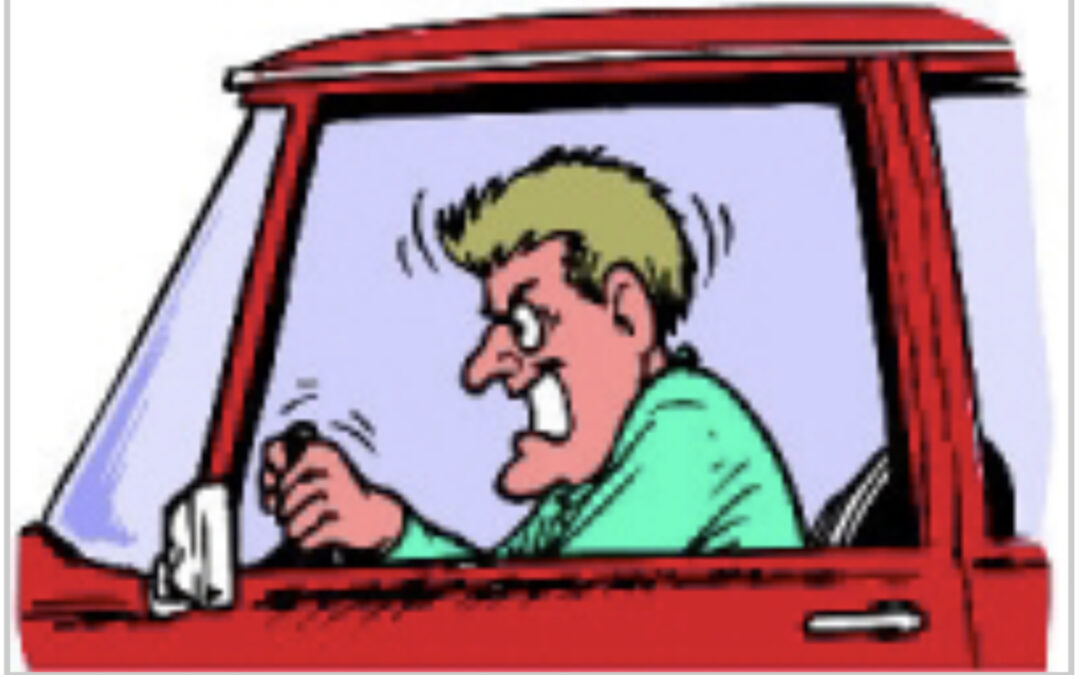If you get tense when you drive, you are not alone! With the increase of traffic and stress on the roads today, many people experience tight shoulders, lower backs and neck muscles as they make the journey from A to B in the relative comfort of their car. This tension doesn’t magically disappear as one exits their vehicle, and it can affect our overall health if not dealt with.
I have two things to offer, to combat this tension before it builds up. The first thing to do is to examine your posture as you drive. Many of us first learned to drive while sharing the car with our parents or someone taller than us. As a result, we have developed habits in our driving posture of which we are unaware. Every time I teach a posture workshop, I encourage the students to check when they next get into their car and see if their seat is too far back. We should have our car seat far enough forward that our foot can easily reach the gas or brake pedal without moving our whole leg and hip! Having to unconsciously reach our foot to push on the gas is creating an unnecessary stress on the pelvis and lower back.
I find that the seat back should be much more vertical than most people position it. The driver’s head should be relaxed against the head rest as they drive, not 6 inches in front of it! Having the head touching the head rest is important for 2 reasons. It allows the postural neck muscles to relax as you drive, and it protects the cervical spine if you are ever in a car accident. The further forward one carries their head from the head rest, the more dramatic the whiplash will be if there is a sudden stop and the head has to travel back to the seat.
Also, one’s arms should be relaxed, with some bend in the elbows as they drive. If our seat is too far back, we will drive with our arms straight and build tension in the shoulders and mid thoracic spine as we grip the steering wheel.
Finally, the curve in the lower back (the lordosis) should be supported. Many cars come with an adjustable lumbar support in the seat, but depending on the shape of your body, this may not be enough support. Adding a small cushion or folding a towel or sweater and placing it in the small of your back will support your lumbar spine and reduce lower back tension.
My second suggestion comes from personal experience on long car trips. It was my own private secret, but I shared it with a patient that was dealing with spinal tension from a long commute and she found it worked for her, so I will share it with all of you… the secret… DANCE. That’s right, put on music you like, turn it up and move to the beat as you drive. Let your shoulders move, your neck, your lower back, wiggle in your seat. You may not want to look to see if the drivers in the next lane are watching, just keep your eyes on the road! This movement will stop tension from building up, releasing it as it forms! The music also puts you in a better mood to handle the challenges of the road!
If you would like to see this in action, watch the “dash cam” video of a Dover Police Officer as he lip syncs to Taylor Swift’s “Shake It Off”. Check the link
I don’t recommend driving with one hand, but this video made me smile, and I am confident that there is no tension in his spine as he sits in his patrol car!
Driving can be hard on the body, but it doesn’t have to be! Check your posture as you drive, and get a good sound track for the road so you can arrive… in style and stress free.
https://youtu.be/8XFBUM8d Dover Police DashCam Confessional (Shake it Off)

